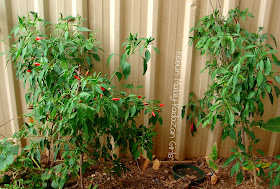Today I got back from school before the sun set and decided to do a quick direct-sowing on the most sunny patch before it gets dark. With seeds and a trowel in hand, I was on my way to that patch when adorable little girls wearing cute Halloween costume walking in our driveway for trick or treat. I should have thought of cutting them flowers too instead of just some chocolates. I hope gardeners from Northern hemisphere which have sudden snow storm in autumn that their plants survived. Leeks and root vegetables like parsnip and carrot must be much more sweeter now after frost?
Komatsuna planted early spring starting to flower so we harvested them. We had many self-sowed lettuce this spring growing as they please which delights the gardener. I made another one mistake this spring, I grow potato on a patch which previously sweet potato grown in it and I dug in all the unwanted part of the harvested sweet potato plants back to the patch at least 20cm deep. Then planted seed potato on it. After 6 weeks, potato plant growth were stunted and started to wilt. However, hardy was those sweet potato veins that they manage to grow so many shoots again after being buried deep into the soil as the weather gets warmer here. Since the potato plants were stunted, we pulled out 3 potato plants that were growing there. So of course only a few potatoes were there for a 2 months old plant.
These are cauliflowers and florence fennels that were harvested from our patch that was growing in shade during fall/winter.We made cauliflower soup. Rayyan likes soup very much. I never made cauliflower soup even after growing them for 3 years each cool season. So this is the first. We frozen a few bag of the cauliflower soup. Florence fennel grow in shade will be tall and lanky. But they do grow and takes a bit longer than sunny places.
Spinach are starting to flower as well so had to harvest them.
Spring onions producing buds now. Trying to decide whether I should eat them or collect seeds.
We harvested our first beans for this spring from Redland Pioneer variety.
While tidying up a patch yesterday, we harvested a whole rainbow chard plant, leeks, florence fennels and Italian parsley.
























































